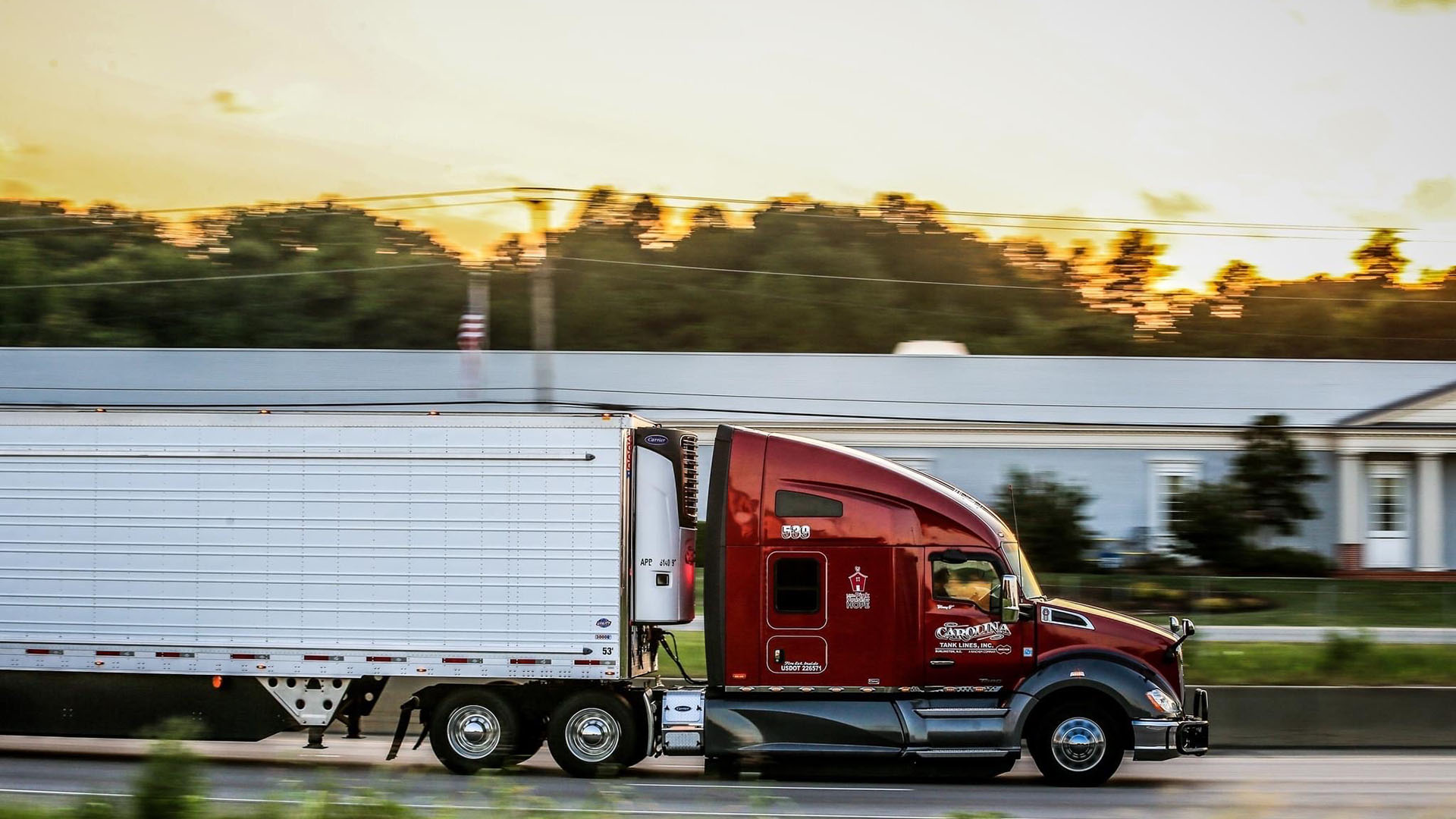This guide covers the four types of chemical storage used in major manufacturing: drums, totes, ISO tanks, and compressed gases. Learn what the containers are, their main uses, and best practices.
Chemical Types
Before getting into the types of storage containers for chemicals, it's important to take a quick look at the variety of chemicals. A few of the common hazmat families include:
Flammable/ combustible
Corrosive acids
Corrosive bases
Oxidizers
Toxics
Water-reactive
Compressed gases
3 Factors for Determining Chemical Storage Location
Once you know the type of chemicals coming into a warehouse, it's then important to understand where they will be stored. The three factors to dictate warehouse position are as follows- of course, by class, but it’s also important to group by compatibility and segregation.
Compatibility & segregation basics
Always follow your local authority (AHJ) requirements
Flammables away from oxidizers
Acids away from bases
- Oxidizing acids (e.g., nitric) away from organic acids (e.g., acetic)
- Water-reactive away from any water source
Use distance, physical barriers, separate rooms/buildings, and independent sumps to keep events from cascading
Most of these storage details and directives will be dictated by the Safety Data Sheet (SDS). The SDS confirms family and any special controls.
Below are some of the standard storage practices for prominent scenarios. Chemicals should be handled by knowledgeable professionals who understand and can execute the SDS directions.
Oxidizers (special care)
Store away from anything combustible (solvents, oils, paper, wood)
Keep cool, dry, and out of direct light to reduce breakdown and oxygen release
Do not co-store with flammables; isolate by distance, barriers, or separate bays
Flammable Liquids
Store in rated rooms or hazmat buildings with spill control and ventilation per your Authority Having Jurisdiction (AHJ)
Control ignition and ventilate appropriately
Vapors move farther than you think. Many solvent vapors are heavier than air and can travel along floors to a distant ignition source.
Temperature-Controlled Hazmat Storage (ambient, chilled, heated/flex)
- Match the SDS temperature band (e.g., 50–95°F for many industrial chemicals, tighter for others)
- For mixed profiles, flex rooms let you adjust setpoints by zone and by season; pair with spill control, dedicated ventilation, and monitoring/alarms
- Use backup power and telemetry so excursions are caught quickly; document responses and trends
Chemical Storage Container Types
So far we've covered the types of chemicals and the guiding principles on where chemicals should go in a warehouse. Now it's time to look at the various storage types. The following four types chemical storage are what we routinely handle in Rinchem warehouses.
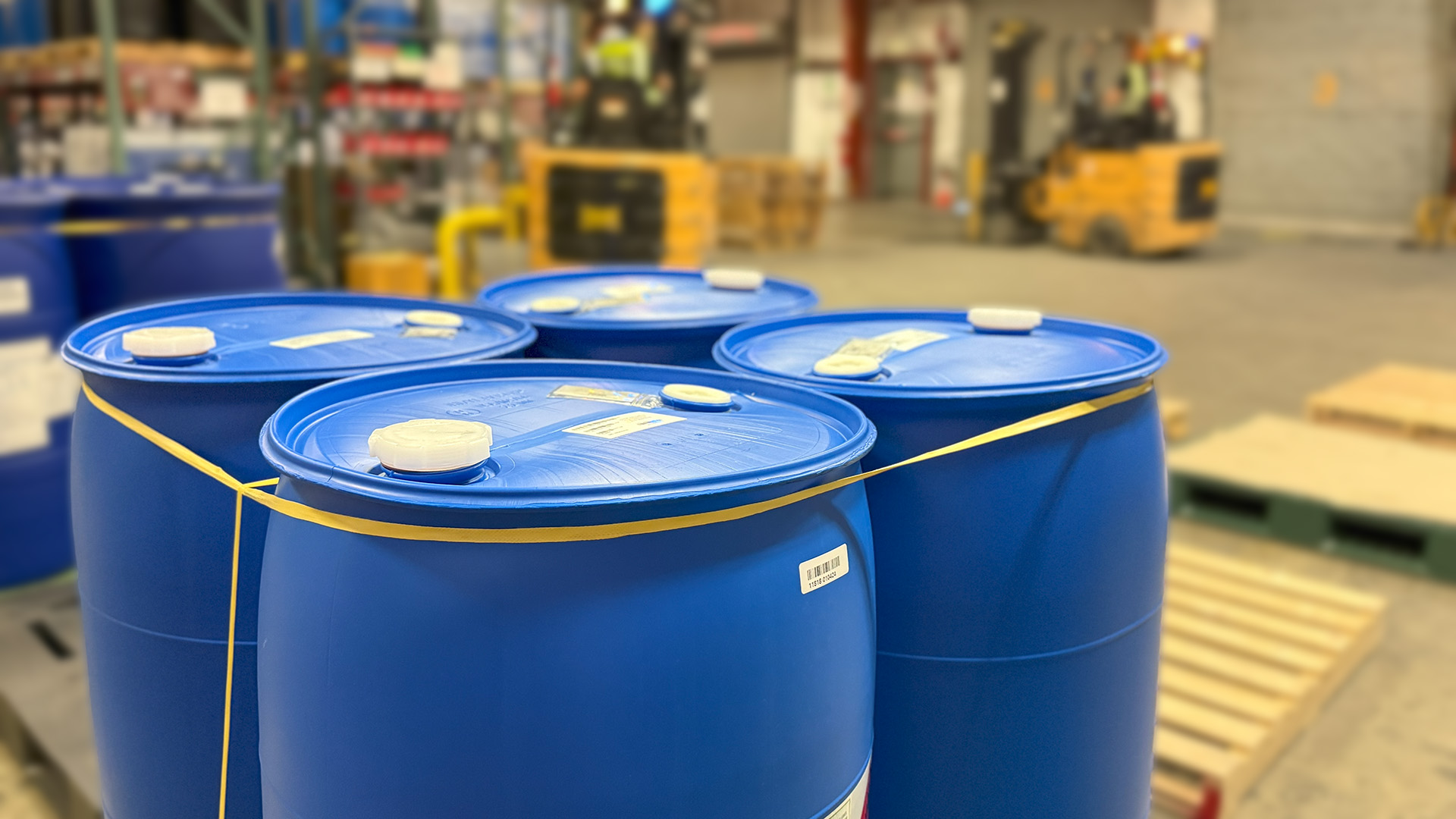
Drums
Drum use cases
Material picks
- Steel for many solvents/flammables
- HDPE/poly for many acids/bases (confirm SDS)
Good practice
- Keep bungs closed; stage on spill pallets or in bermed rows
- Weekly housekeeping: dry floors, clear aisles, intact bungs and rings; remove dented or rusted units
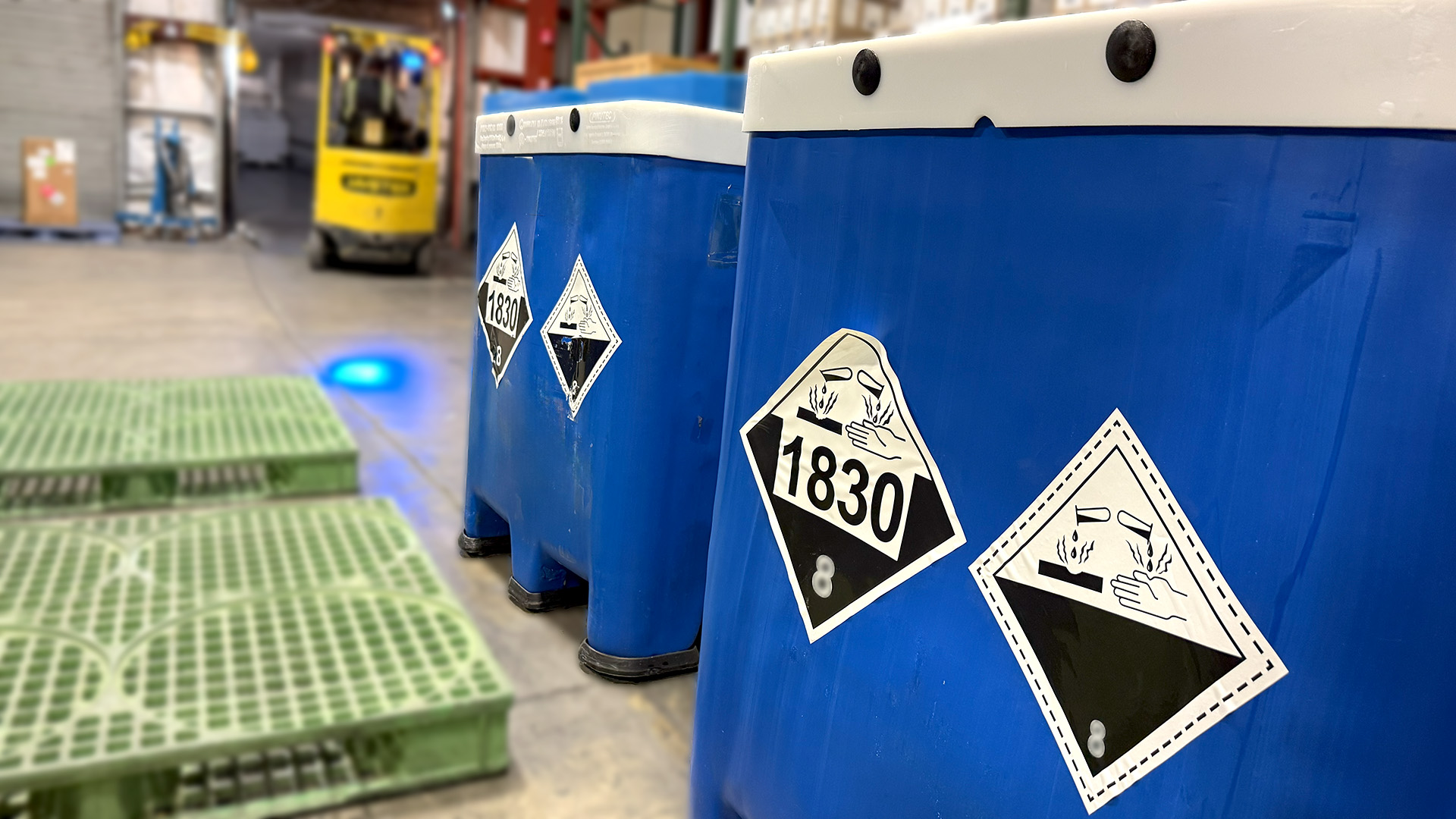
Totes
What are totes?
Cube-shaped containers (most 275–330 gal) with a bottom valve; plastic bottle in a metal cage; forklift-ready.
Best for
- Medium-to-large liquid volumes; fewer connections than multiple drums
- Choose right: Check the SDS for compatibility; use totes with the proper UN/DOT rating and gasket
Good Practice
- Place on level, rated floor or IBC rack; keep caps/dust covers on; stack only if rated
- Dispense by pump or controlled gravity with a shutoff and drip tray
- For flammables, bond and ground tote and receiving container; keep ignition sources out of the area. Since we do not dispense the warehouse is grounded
- Size secondary containment to the largest tote; keep incompatible products in separate sump cells
- Quick check: cage/valve damage, leaks, tight fittings, legible label
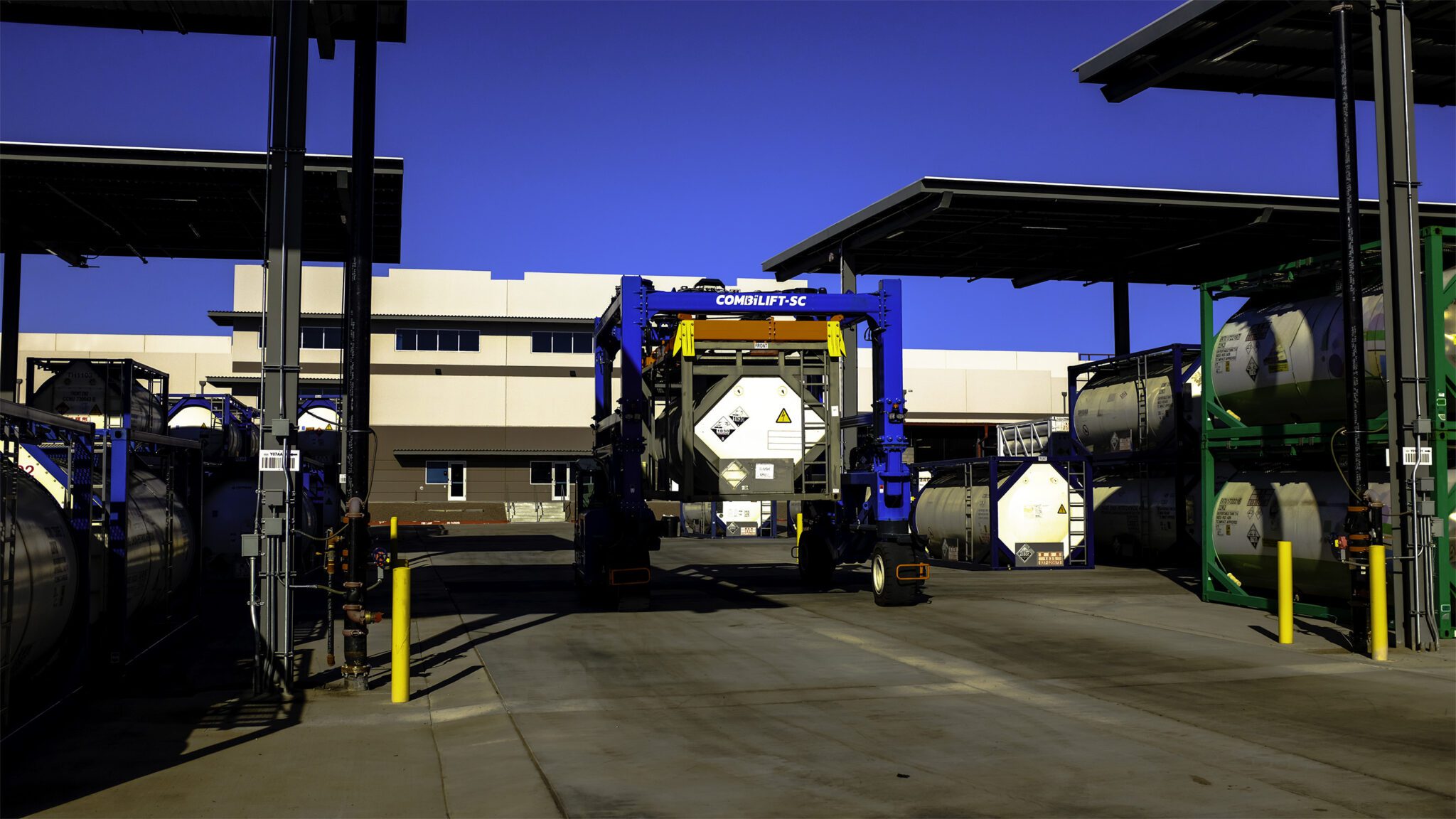
ISO Tank Containers
What are ISO tank containers?
20-foot, steel-framed, stackable tanks for bulk liquids (about 4,000–6,500 gal). A stainless-steel vessel sits inside the frame, often insulated with options for steam/electric heat. Moved by truck, rail, or ship and handled on a chassis in the yard. Standard fittings include a top manway and top/bottom valves with caps.
Use case
High-volume liquids and long-haul replenishment.
Yard basics
- Level hardstand, marked lanes, crane or top-lift procedures as approved; stack only per frame rating and depot rules
- Gantry access for top valves; no work at height without fixed systems
- Set containment capacity to your largest tank in the bay; add isolation valves and monitored sumps for early detection (Apply SPCC or local spill rules where applicable)
- Maintain compliance: pressure vessel code/ratings, ISO 1496-3 frame, CSC plate, and modal rules (IMDG/ADR/RID/49 CFR)
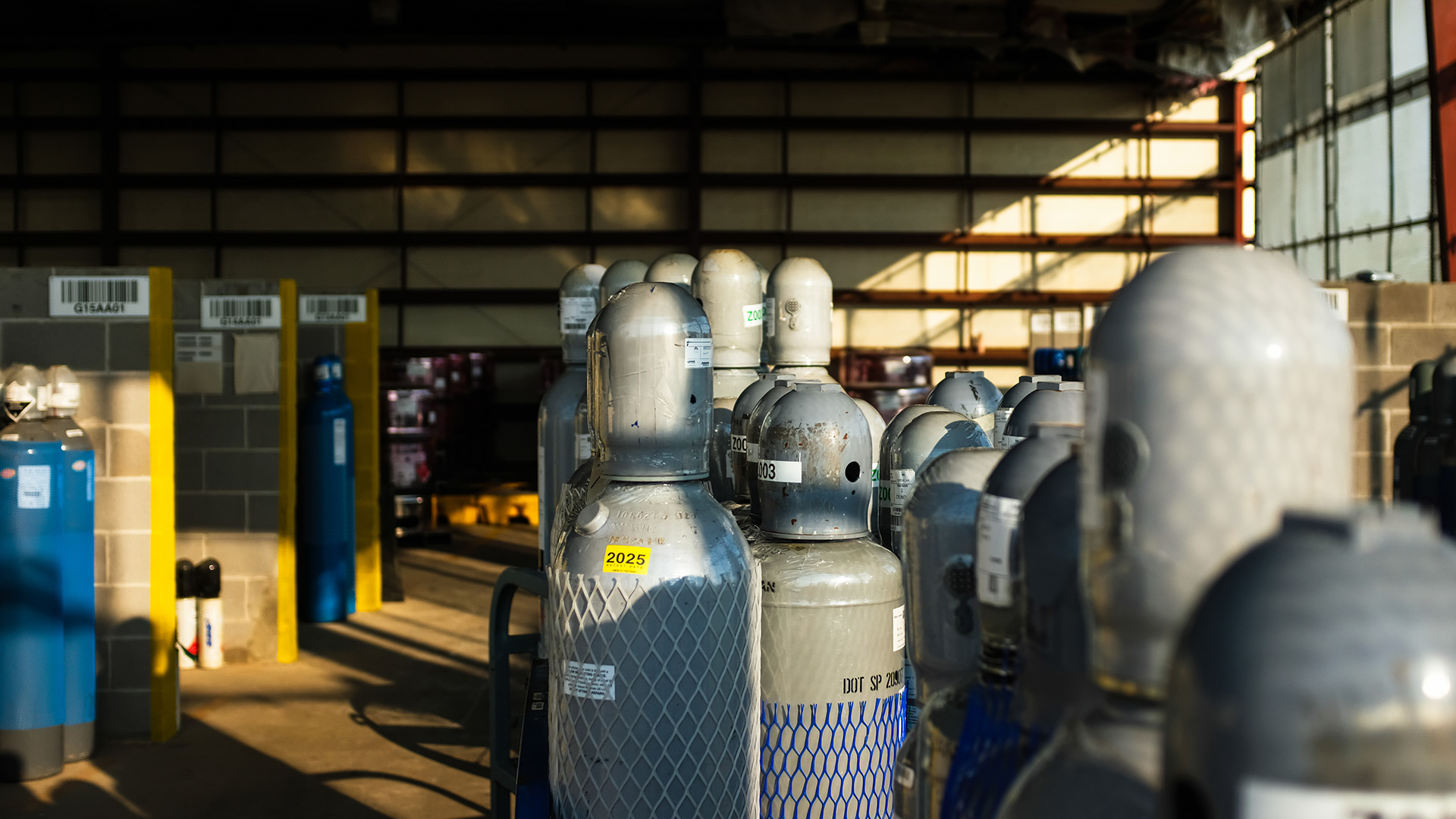
Compressed Gas Cylinders
What are compressed gas cylinders?
High-pressure containers for gases like nitrogen, oxygen, hydrogen, and acetylene. Steel or aluminum bodies with a valve and protective cap; common sizes ~150–300 cu ft.
Storage
Upright; secured; caps on when stored or moved; content labels facing out.
Separation
Handling
Strap to carts; no rolling or dragging; remove regulators for transport.
Good practice
- Store upright and secured (chain/strap), caps on when stored or moved, labels facing out. Use dry, ventilated areas away from heat, traffic, and impacts; no hallway storage.
- Keep oxygen/oxidizers away separated from fuel gases - 20 ft minimum or a 5-ft, 30-min fire-rated barrier. Segregate full vs. empty and mark empties.
- Handle gas cylinders with a cart and strap; don’t roll or drag. never lift by the cap. Protect valves and keep caps/plugs in place.
- Identify: Read the label, not the color. Keep product IDs legible at all times.
Get more articles like this in your inbox
Sign up for our monthly newsletter
Find more articles


